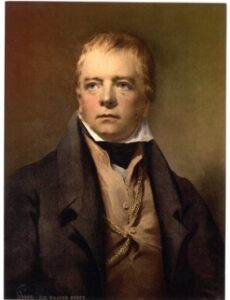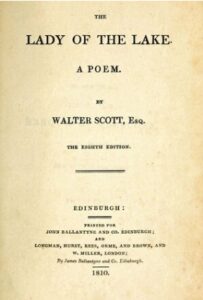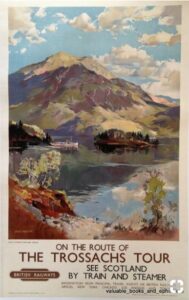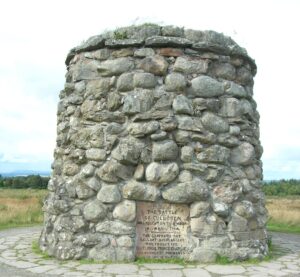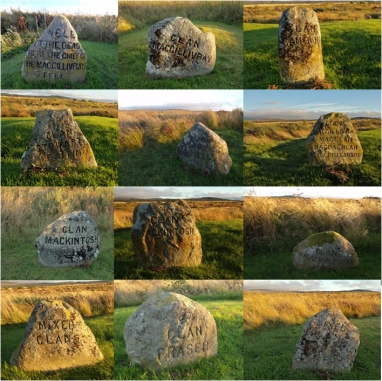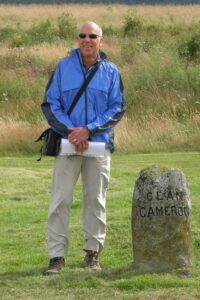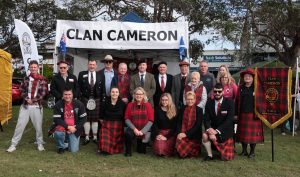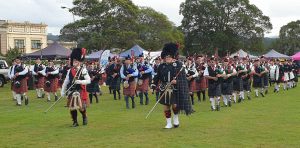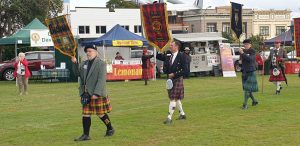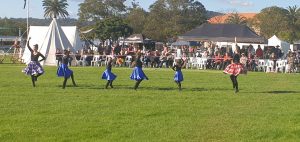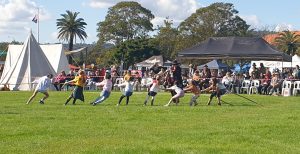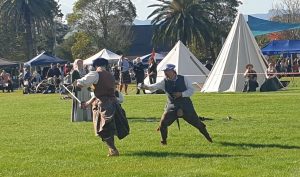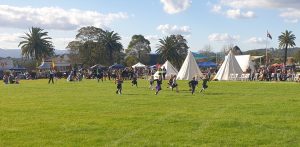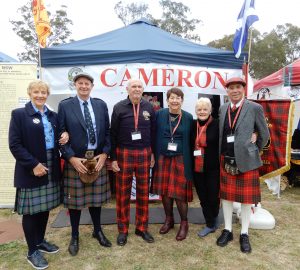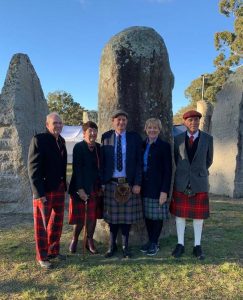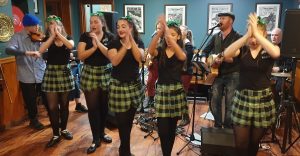
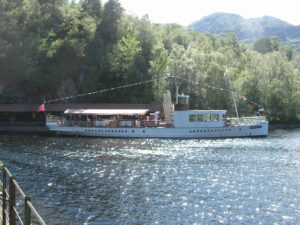
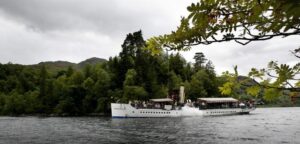
The Appeal
The charitable Trust that looks after Sir Walter Scott Steamship has launched an urgent SOS – Save our Steamship appeal to restore the much loved 121-year-old steamer.
£500,000 is needed to restore the historic steamer, which is currently not sailing as she requires a new boiler and other significant repairs. These funds will have to be secured by the end of this year to allow work to begin in time to allow sailing in the National Park in summer 2022.
Sir Walter Scott Steamship, named after the poet whose famous poem ‘Lady of the Lake’ about Loch Katrine was published in 1810. Scott was born 250 years ago, and his work and that of other artists and poets of the day put Loch Katrine on the map.
Support for the appeal to get Sir Walter Scott Steamship back into operation for current and future generations to enjoy sailing on Loch Katrine can be made via the link below..
Steamships on Loch Katrine
Sir Walter Scott was launched in 1900. She was Loch Katrine’s fourth steamer. The first being Gypsy, introduced in 1843, providing competition to ‘Water Witch’, an eight-oared wooden galley.
Gypsy was to sink under mysterious circumstances just a week later, allegedly by the ferrymen who thought the steamer’s arrival threatened their jobs. Rob Roy and then Rob Roy II steamers followed until 1900, when Sir Walter Scott was introduced.
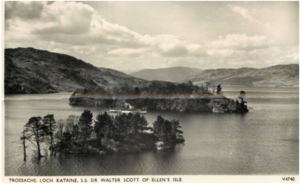
About Loch Katrine
Loch Katrine, in the Trossachs, is part of Loch Lomond & The Trossachs, Scotland’s first National Park and the Great Trossachs Forest National Nature Reserve.
The loch is 11 miles long, one mile wide at its widest point, and 540 feet deep. The name comes from the Gaelic ceathairne, meaning cattle thief which may be due to strong links with famous cattle dealer and Clan Chief Rob Roy MacGregor. Loch Katrine is one of Scotland’s natural wonders with a rich history and stunning scenery, attracting visitors for over 200 years.
Sir Walter Scott
In 1809 Scottish writer Sir Walter Scott holidayed in the Trossachs and spent many hours writing his poem ‘The Lady of the Lake’. When released in 1810, it was the blockbuster of its day; 25,000 editions were sold in the first 8 months after release. Sightseers flocked to Loch Katrine to see for themselves the scenes inspired by Scott’s vivid descriptions. He followed this with his adventure novel Rob Roy in 1817, which romanticised the rogue-hero and reinforced the appeal of the loch.
